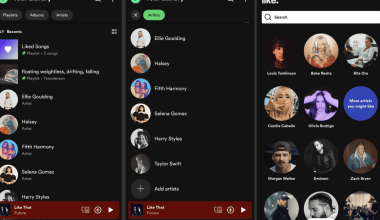In the world of music streaming, Spotify has revolutionized the way we enjoy our favorite songs. Ever noticed how Spotify recommends songs that perfectly match your mood? This isn’t magic but the result of powerful algorithms that calculate a song’s audio mood. If you’ve ever wondered how Spotify does this or how you can calculate Spotify audio mood yourself, this blog is for you!
In this post, we’ll break down everything you need to know about analyzing audio mood. Whether you’re a music lover, playlist curator, or data enthusiast, you’ll find something helpful here. Let’s get started!
What is Spotify Audio Mood?
Before we dive deeper, let’s first understand what Spotify audio mood actually means. Spotify analyzes the audio characteristics of a song, such as energy, danceability, tempo, and valence, to figure out its mood.
For example:
- High energy songs feel upbeat and lively.
- Tracks with high danceability are groovy and make you want to move.
- Valence tells you how happy or sad a song sounds.
When you combine these elements, Spotify creates an overall mood profile for every track in its library. This analysis helps the platform recommend songs that suit your current vibe.
Why Does Spotify Analyze Music Moods?
Spotify uses audio mood analysis to make your music experience more personal and enjoyable. Here’s why this matters:
- Better recommendations: The algorithm suggests songs that match your current mood.
- Mood-based playlists: Think of playlists like “Happy Hits” or “Sad Songs”. Spotify uses mood data to curate these lists.
- Discover new music: Mood-based suggestions often introduce you to songs you might not have found otherwise.
If you want to calculate Spotify audio mood yourself, knowing the basics will help you better analyze music.
How Does Spotify Calculate Audio Mood?
Spotify relies on advanced tools to measure different aspects of a song. Here are the key components Spotify uses to calculate a song’s mood:
- Valence: A measure of happiness or positivity in a song. Higher valence indicates cheerful, bright music.
- Energy: Reflects the intensity and activity of the track. High-energy songs feel dynamic and lively.
- Danceability: Indicates how suitable a track is for dancing.
- Tempo: The speed of the song, measured in beats per minute (BPM).
- Loudness: Determines the volume levels in a track.
- Acousticness: Measures how organic or acoustic a song sounds.
These components combine to give a full picture of the song’s mood. When you calculate Spotify audio mood, you’re analyzing these very characteristics.
Tools to Calculate Spotify Audio Mood
If you want to calculate Spotify audio mood for your favorite songs, there are several tools and apps available. Here are some easy-to-use tools:
1. Spotify API
The Spotify API allows developers to access detailed audio features of any song, including its mood data.
- You’ll need a Spotify developer account.
- Use tools like Postman to fetch audio analysis data.
This method is technical but powerful for those interested in data analysis.
2. Online Tools
If you’re not tech-savvy, don’t worry! There are websites that can analyze Spotify audio mood for you. Examples include:
- Tuneable: A platform that offers insights into a song’s mood and key characteristics.
- Musicstax: Allows you to analyze valence, energy, tempo, and more.
These tools are beginner-friendly and don’t require coding knowledge.
3. Apps
Some mobile apps are also designed to measure song moods. They connect to Spotify and provide mood-based insights in a user-friendly interface.
Step-by-Step Guide to Calculate Spotify Audio Mood
Now that you know the tools available, let’s walk through how to calculate Spotify audio mood step-by-step.
Step 1: Access the Spotify API
- Go to the Spotify Developer Dashboard.
- Create a new application to get your API key.
- Use this key to access Spotify’s audio analysis endpoint.
Step 2: Choose a Song
Pick the track you want to analyze. Make a note of its Spotify URI or track ID.
Step 3: Fetch the Audio Features
Using the Spotify API or a third-party tool, fetch the following audio features:
- Valence
- Energy
- Danceability
- Tempo
Step 4: Analyze the Data
Once you get the data, interpret the values:
- High valence + high energy = Happy, upbeat song
- Low valence + low energy = Sad, mellow track
- High danceability = A dance-friendly song
You can even create charts to visualize these values for a better understanding.
Applications of Calculating Spotify Audio Mood
Analyzing the mood of a song isn’t just for fun. Here are some practical applications:
- Creating Mood-Based Playlists By understanding a song’s mood, you can create playlists for specific emotions, like happy, sad, or relaxed vibes.
- Music Marketing Artists and marketers can use audio mood data to target the right audience.
- Content Creation Mood-based music selection is perfect for creating background music for videos, podcasts, or events.
- Data Analysis If you’re into data science, Spotify audio mood can help you explore patterns and trends in music preferences.
Final Thoughts
Calculating Spotify audio mood may sound technical, but it’s surprisingly accessible. With tools like the Spotify API and online platforms, anyone can analyze the mood of their favorite tracks. Whether you’re building playlists, exploring new music, or studying audio data, understanding song moods enhances your Spotify experience.
So next time you hear a song, think about its energy, valence, and tempo. You’ll gain a new appreciation for how music matches your mood.
For further reading, explore these related articles:
- How to Get Good Music on Instagram: A Complete Guide
- SoundCloud on Spotify: Bridging the Music Streaming Gap
For additional resources on music marketing and distribution, visit DMT Records Private Limited.






